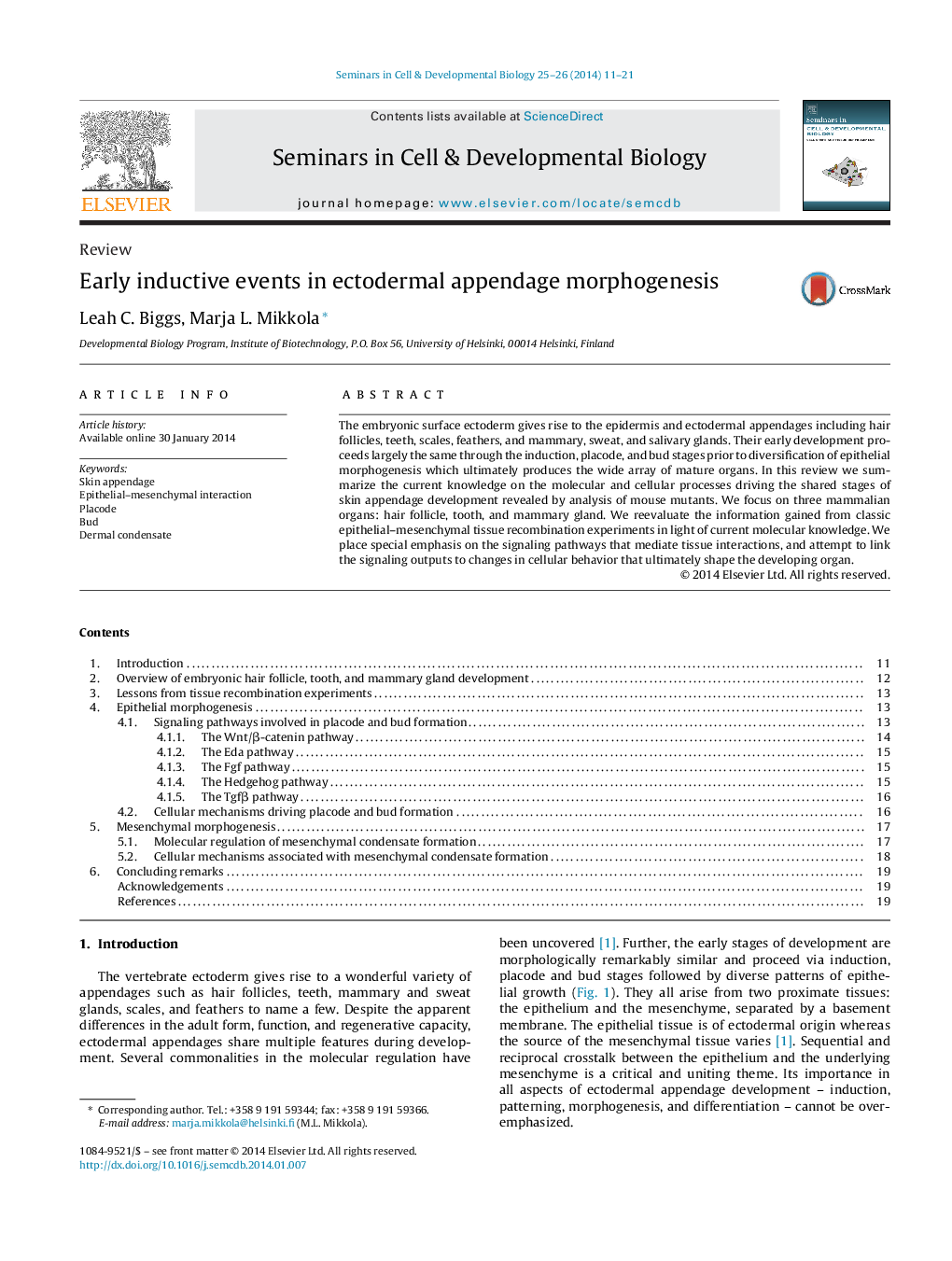| کد مقاله | کد نشریه | سال انتشار | مقاله انگلیسی | نسخه تمام متن |
|---|---|---|---|---|
| 2202651 | 1551396 | 2014 | 11 صفحه PDF | دانلود رایگان |
• The vertebrate ectoderm gives rise to a wide variety of organs known as ectodermal appendages.
• Ectodermal appendage development is guided by epithelial–mesenchymal tissue interactions.
• Epithelial morphogenesis of ectodermal appendages proceeds through placode and bud stages while the mesenchymal tissue forms specific condensates.
• The early stages of ectodermal appendages have both shared and unique characteristics.
• Cellular mechanisms governing ectodermal appendage development are gradually being uncovered.
The embryonic surface ectoderm gives rise to the epidermis and ectodermal appendages including hair follicles, teeth, scales, feathers, and mammary, sweat, and salivary glands. Their early development proceeds largely the same through the induction, placode, and bud stages prior to diversification of epithelial morphogenesis which ultimately produces the wide array of mature organs. In this review we summarize the current knowledge on the molecular and cellular processes driving the shared stages of skin appendage development revealed by analysis of mouse mutants. We focus on three mammalian organs: hair follicle, tooth, and mammary gland. We reevaluate the information gained from classic epithelial–mesenchymal tissue recombination experiments in light of current molecular knowledge. We place special emphasis on the signaling pathways that mediate tissue interactions, and attempt to link the signaling outputs to changes in cellular behavior that ultimately shape the developing organ.
Journal: Seminars in Cell & Developmental Biology - Volumes 25–26, January–February 2014, Pages 11–21
